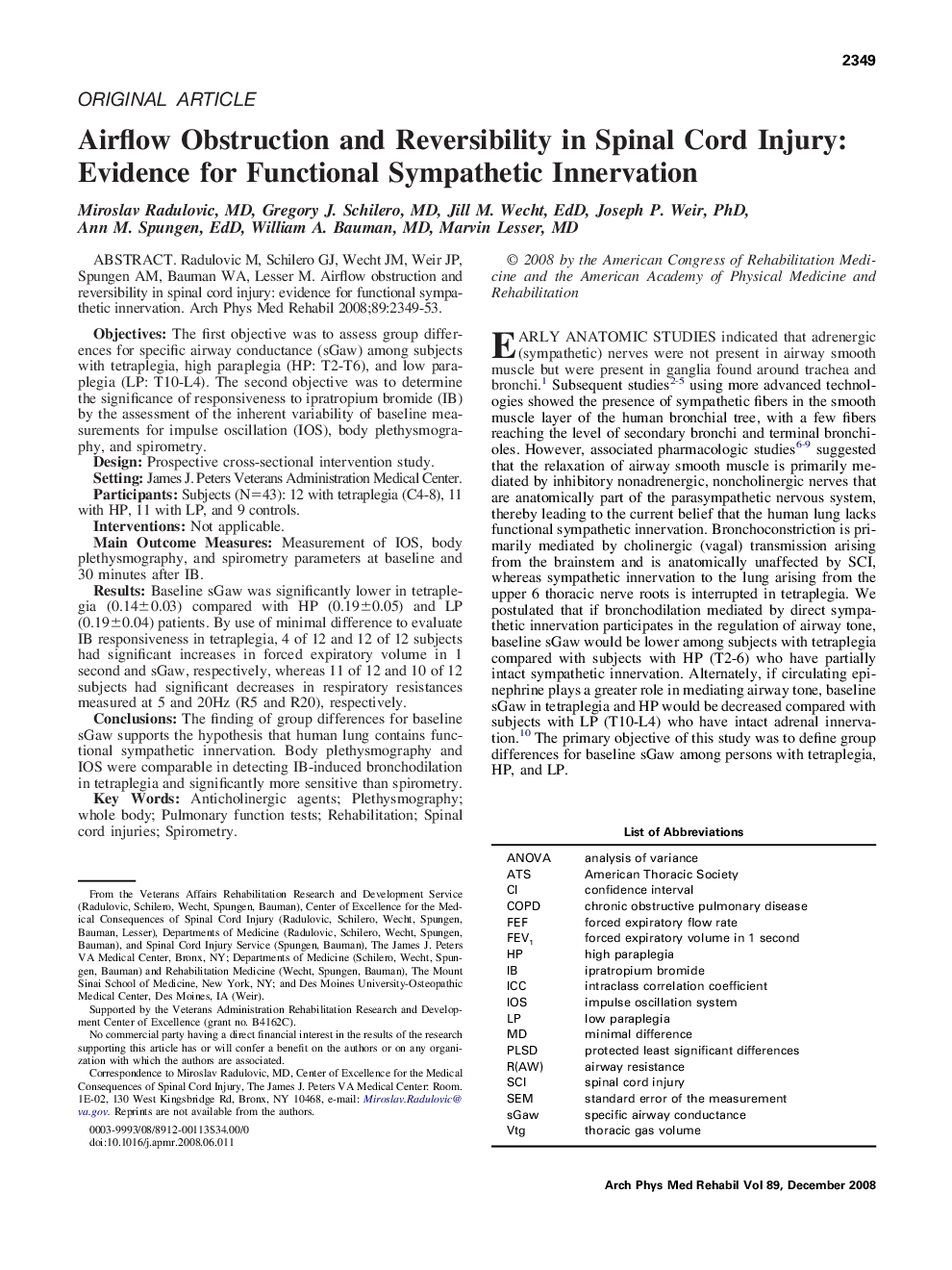| Article ID | Journal | Published Year | Pages | File Type |
|---|---|---|---|---|
| 3450253 | Archives of Physical Medicine and Rehabilitation | 2008 | 5 Pages |
Radulovic M, Schilero GJ, Wecht JM, Weir JP, Spungen AM, Bauman WA, Lesser M. Airflow obstruction and reversibility in spinal cord injury: evidence for functional sympathetic innervation.ObjectivesThe first objective was to assess group differences for specific airway conductance (sGaw) among subjects with tetraplegia, high paraplegia (HP: T2-T6), and low paraplegia (LP: T10-L4). The second objective was to determine the significance of responsiveness to ipratropium bromide (IB) by the assessment of the inherent variability of baseline measurements for impulse oscillation (IOS), body plethysmography, and spirometry.DesignProspective cross-sectional intervention study.SettingJames J. Peters Veterans Administration Medical Center.ParticipantsSubjects (N=43): 12 with tetraplegia (C4-8), 11 with HP, 11 with LP, and 9 controls.InterventionsNot applicable.Main Outcome MeasuresMeasurement of IOS, body plethysmography, and spirometry parameters at baseline and 30 minutes after IB.ResultsBaseline sGaw was significantly lower in tetraplegia (0.14±0.03) compared with HP (0.19±0.05) and LP (0.19±0.04) patients. By use of minimal difference to evaluate IB responsiveness in tetraplegia, 4 of 12 and 12 of 12 subjects had significant increases in forced expiratory volume in 1 second and sGaw, respectively, whereas 11 of 12 and 10 of 12 subjects had significant decreases in respiratory resistances measured at 5 and 20Hz (R5 and R20), respectively.ConclusionsThe finding of group differences for baseline sGaw supports the hypothesis that human lung contains functional sympathetic innervation. Body plethysmography and IOS were comparable in detecting IB-induced bronchodilation in tetraplegia and significantly more sensitive than spirometry.
